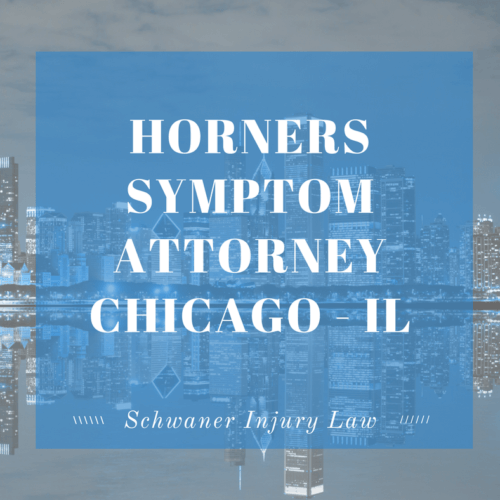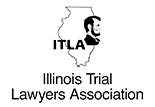
Horner’s Syndrome Attorney – Chicago, IL
While Horner’s syndrome can occur at any age, in the majority of cases, the disorder is the result of a birth injury that occurs when the nerves leading from the brain to the eye and face become damaged, usually during a complicated childbirth.
The syndrome is rare. Less than 2 out of every 100,000 people have Horner’s syndrome, and 65 percent of cases are associated with birth injuries.
Horner’s syndrome has been linked to Klumpke’s palsy, a brachial plexus injury that often occurs when a baby becomes stuck in the birth canal, either due to shoulder dystocia (the baby’s shoulder becomes stuck against the mother’s pelvic bone) or cephalopelvic disproportion (the baby’s head is unable to fit through the mother’s pelvis). Both injuries can cause damage to the brachial plexus, a bundle of nerves that extend from the top of the spinal cord to the shoulder and are responsible for controlling movements of the arm, hand and wrist.
While Horner’s is most often associated with Klumpke’s palsy, it may also be caused by a tumor that puts pressure on the nerves of the face, such as neuroblastoma, a childhood cancer impacting nerves, or by a neonatal stroke triggered when a baby suffers from a lack of oxygen during childbirth, which can cause damage to the brainstem.
Risk Factors for Horner’s Syndrome
Table of Contents
In addition to shoulder dystocia and cephalopelvic disproportion, Horner’s syndrome can also be the result of other factors, including:
- Excessive maternal weight gain
- Gestational diabetes
- Multiple births
- Prolonged or difficult labor
- The induction of labor with the misuse of drugs including Pitocin and Cytotec, both of which can cause strong uterine contractions that speed labor, causing birth trauma
- The positioning of the fetus
- The misuse of assisted birthing devices including forceps and vacuum extractors
- Pulling or twisting of the baby too roughly when manually assisting during a vaginal delivery.
In cases where there are risk factors for birth injuries such as Horner’s syndrome, medical professionals should use cesarean section as a delivery option in order to prevent potential problems that could occur when a baby is too large or a mother’s pelvis is to small or narrowly shaped for a standard vaginal delivery.
Symptoms of Horner’s Syndrome
One symptom of Horner’s syndrome is anisocoria, a condition that causes the pupils to be different sizes at the same time because one pupil is unable to effectively respond to changes in light. Those with Horner’s syndrome most often have miosis, which occurs when one pupil is unable dilate properly. It is most noticeable in darker settings, because one pupil will become larger, while the miotic pupil will remain smaller.
Other symptoms include:
- A droopy upper eyelid (ptosis) or an elevated lower lid (inverse ptosis), which make the affected eye appear smaller than the other eye.
- Heterochromia, a condition that causes the iris of one eye to be lighter than the iris of the other.
- Lower fluid pressure in the affected eye. Low eye pressure can cause vision problems because the retina, lens and cornea can become misshapen.
- Anhydrosis, a condition that causes sweating to be decreased on the side of the face that is impacted by Horner’s syndrome.
- Headaches and neck pain.
- A lack of muscle control.
Treatment for Horner’s syndrome
While there is no cure for Horner’s syndrome, if the condition was caused as a result of a birth injury and is a symptom of Klumpke’s palsy, there are several different options doctors can use to treat your child.
Medication, therapy and surgery are all ways to address Klumpke’s palsy, and those treatments may help relieve some of the symptoms associated with Horner’s syndrome.
In some cases, Horner’s syndrome can be accompanied by other health problems including cerebral palsy caused by oxygen loss during a traumatic birth, making treatment options less successful.
Horner’s Syndrome and Medical Malpractice
Because Horner’s syndrome is often the result of birth trauma, it is in many cases a birth injury that would have been preventable had staff followed the standard of care expected in a healthcare setting.
If a doctor misuses forceps or a vacuum extractor, fails to schedule a cesarean section when appropriate, doesn’t properly measure a baby while in utero or twists a child too roughly while attempting to deliver him or her, it is likely a case of negligence, and an experienced attorney will be able to help you navigate unfamiliar territory.
While such cases can be difficult, and hospitals often have a large team of lawyers if a case isn’t settled by insurance negotiations and goes to court, an experienced attorney will have access to medical experts who can help determine the cause of your child’s injuries, helping a jury to understand your Horner’s syndrome diagnose and what it means for you and your child.
Your child’s injuries should be your first concern, and with the right attorney in your corner, you will be able to focus on obtain the proper care, while your legal team helps you obtain compensation to cover the costs.












